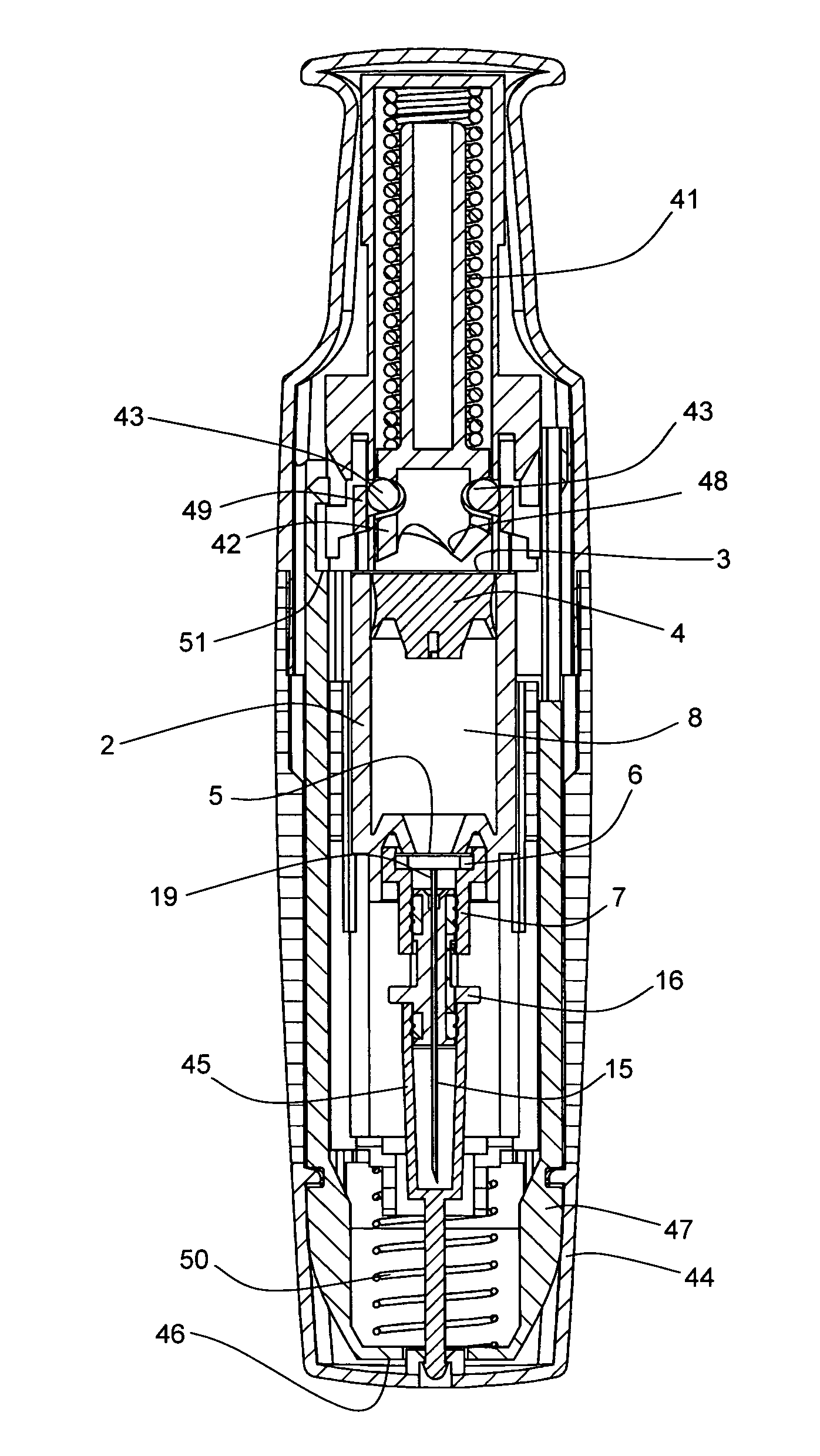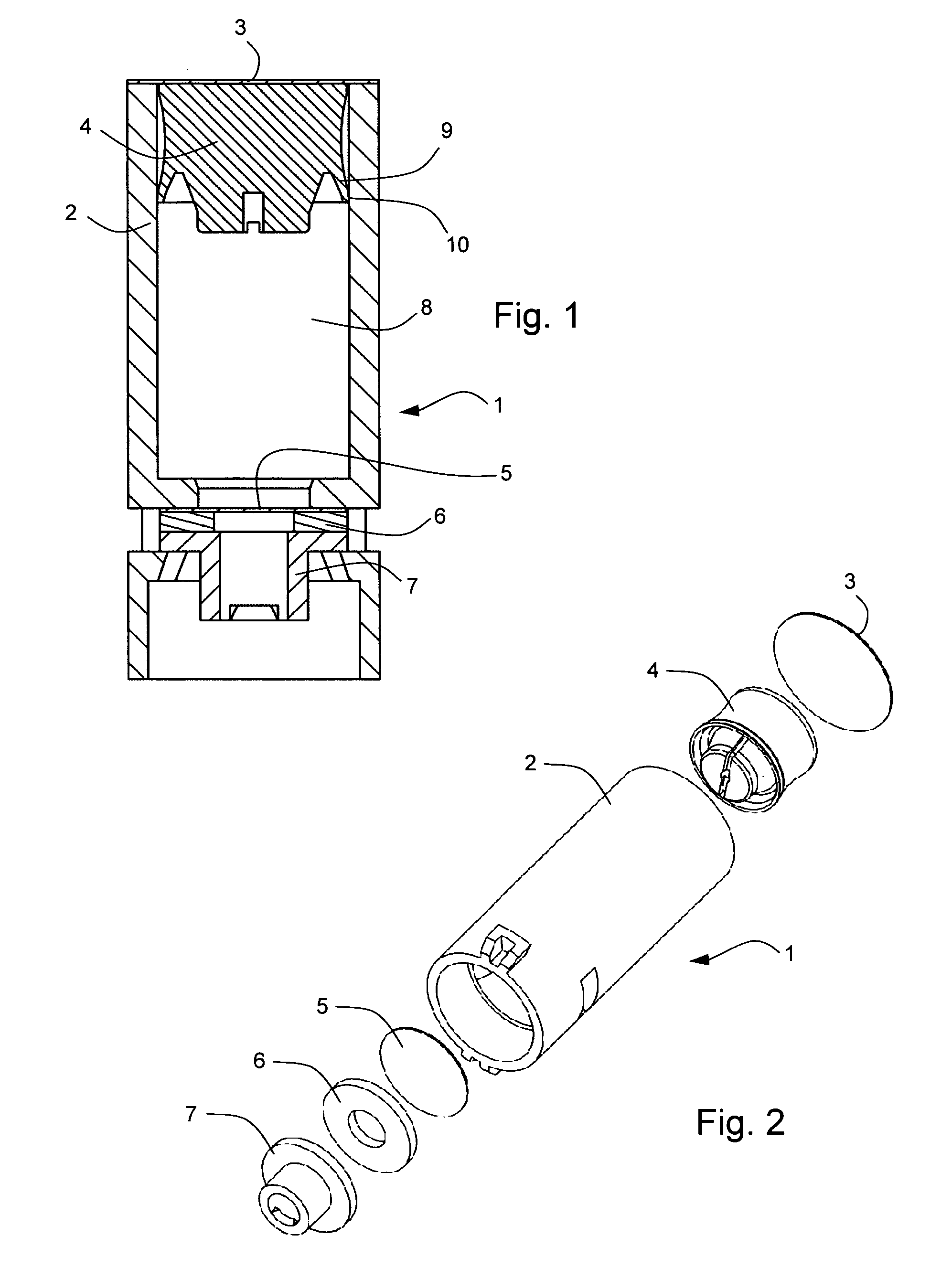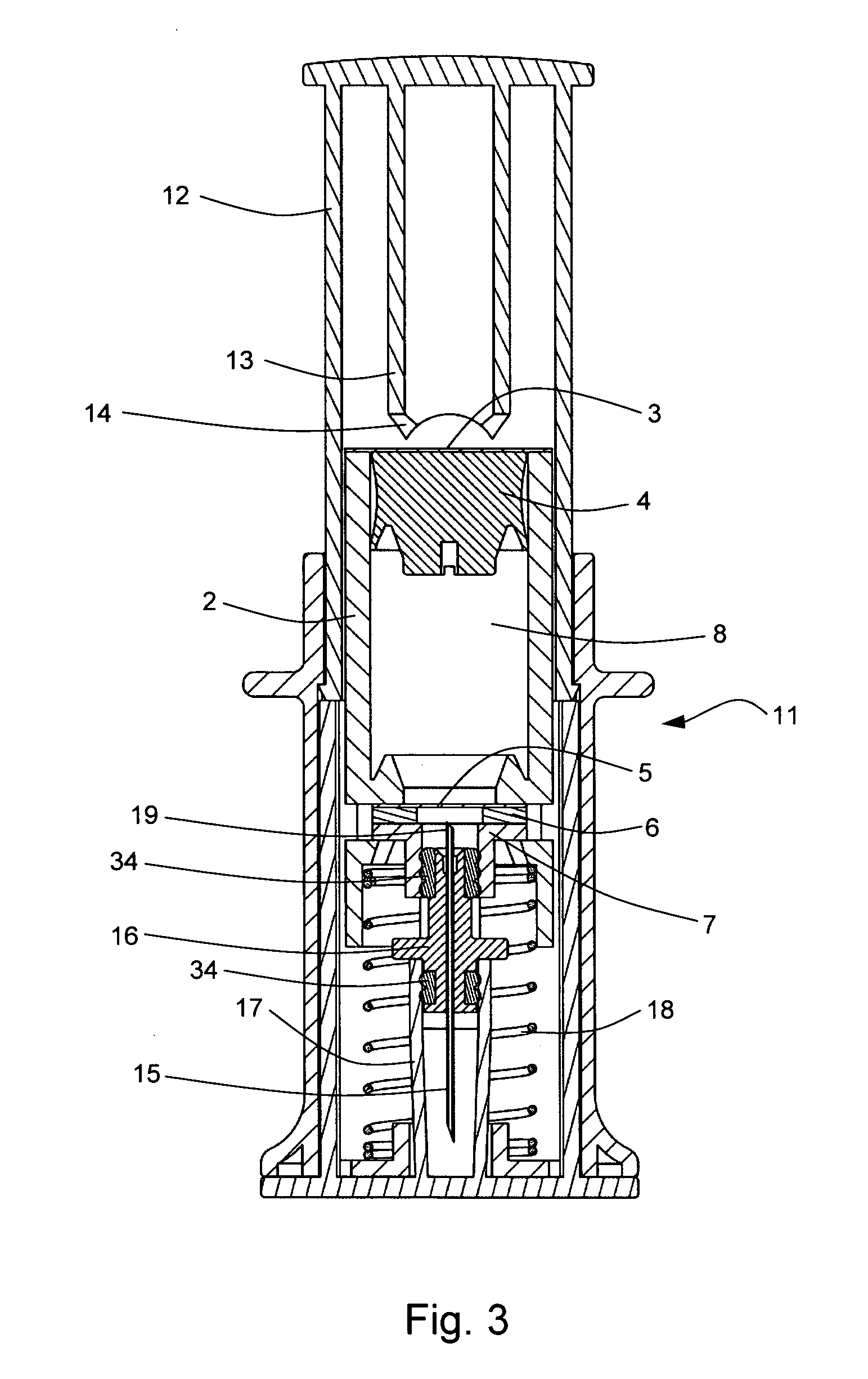Drug container and delivery mechanism
a technology for drug containers and delivery mechanisms, which is applied in the direction of infusion needles, packaged goods types, special packaging, etc., can solve the problems of increasing the force required to move the plunger within the housing, shortening the time for which the drug remains in a usable condition within the device, and not allowing any surface of the container to be in contact, so as to reduce friction, less likely to ‘stall’, and seal the effect of sealing
- Summary
- Abstract
- Description
- Claims
- Application Information
AI Technical Summary
Benefits of technology
Problems solved by technology
Method used
Image
Examples
Embodiment Construction
For the purposes of describing the invention the primary drug container is defined as the housing, plunger, and any sealing components required in order to contain the drug within the housing.
FIG. 1 shows one example of a primary drug container 1 for use in a drug delivery device in accordance with the present invention. The primary drug container 1 comprises a housing 2, a first sealing element 3, a plunger 4, a second sealing element 5, a compression washer 6 and a mechanical fastening component 7. The housing 2, the first sealing element 3 and the second sealing element 5 form a sealed container which is substantially impermeable to moisture, atmospheric gasses including oxygen, and biological contamination. A drug 8 is contained within the container prior to administration to a patient. The primary drug container can form part of a drug delivery device, but can be filled and sealed in a separate environment from assembly to the rest of the drug delivery device, in order to prote...
PUM
| Property | Measurement | Unit |
|---|---|---|
| Elastomeric | aaaaa | aaaaa |
| Friction | aaaaa | aaaaa |
| Sterile | aaaaa | aaaaa |
Abstract
Description
Claims
Application Information
 Login to View More
Login to View More - R&D
- Intellectual Property
- Life Sciences
- Materials
- Tech Scout
- Unparalleled Data Quality
- Higher Quality Content
- 60% Fewer Hallucinations
Browse by: Latest US Patents, China's latest patents, Technical Efficacy Thesaurus, Application Domain, Technology Topic, Popular Technical Reports.
© 2025 PatSnap. All rights reserved.Legal|Privacy policy|Modern Slavery Act Transparency Statement|Sitemap|About US| Contact US: help@patsnap.com



